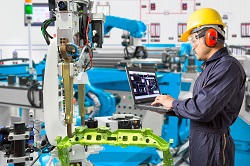Interaction of physical and virtual testing benefits European aerospace
The EU-funded MOTIVATE(opens in new window) project has created a step change in the way simulations, or virtual tests, and physical tests are brought together in an industrial environment. “Our goal was to develop a smarter methodology for validation of computer simulations,” states project coordinator Eann Patterson. Results are validated by evaluating the extent to which predictions from a model accurately describe the reality that the model is intended to represent.
Innovative technologies
MOTIVATE had three main objectives, the first of which was to develop a robust and repeatable method for the quantification of uncertainties of measurements in an industrial environment. Project partners then produced advanced structural test protocols with an associated methodology for validating simulations and data and applied them during a structural test case as a demonstration. The result was a methodology for the validation of simulation models in structural mechanics and a protocol for validating numerical results from simulations of an aircraft subcomponent test based on digital image correlation (DIC) measurements. Researchers finally developed protocols and best practice ‘double-blind’ deployment of the protocol and implementation of validation methodology. The test case brought together the measurements from the physical tests – including deformation on a fuselage panel, with the predictions from the computer model. This allowed researchers to explore their new approaches to validating the predictions using the real-world measurements. “Close cooperation with Airbus(opens in new window) has allowed us to test our innovative technologies on a large scale and in an industrial environment, which is leading to their adoption in Airbus and hopefully elsewhere,” Patterson notes.
Faster, cheaper, safer
This approach to quantifying measurement uncertainties and to utilising fields of measurements describing structural deformation for validating computational results is beginning to transform the structural test procedures used in the aerospace industry. According to Linden Harris, Topic Manager for Airbus: “These changes will reduce development times and costs for the aerospace industry. The new validation methodology will strengthen the role of virtual testing in the aerospace industry and reduce the reliance on expensive, time-consuming physical tests, while increasing design efficiency and the level of safety of our products.” Moreover, MOTIVATE will raise the technology readiness level of validation procedures for computational solid mechanical models from level 4 to level 6. “It will benefit designers of large-scale passenger aircraft, allowing them to reduce dependency on physical tests and exploit further the digital world, even digital twins (digital replicas of physical assets),” Harris concludes. Meanwhile, MOTIVATE’s sister project, DIMES(opens in new window), which also involves Airbus, is developing an innovative low-cost measurement system that will provide even more data to support the validation process for simulations.







